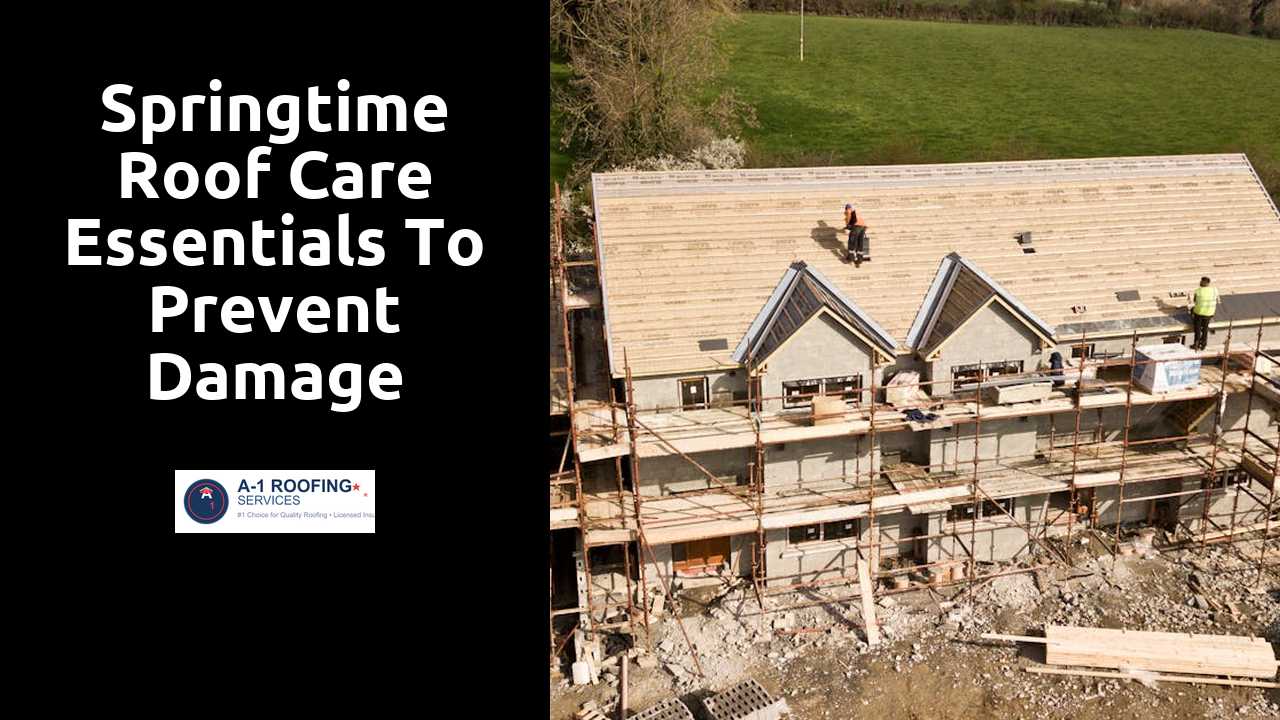
Springtime Roof Care Essentials to Prevent Damage
Table Of Contents
Checking for Missing or Damaged Shingles
Spring offers an excellent opportunity to inspect your roof for missing or damaged shingles. This inspection should start with a visual check from the ground. Look for any shingles that appear out of alignment, have curling or buckling edges, or are completely missing. Discoloration can also be a sign of weathering or wear. A thorough examination may require a ladder for a closer look, ensuring safety is the top priority during this inspection.
Replacing damaged or missing shingles promptly can help prevent larger issues, such as leaks or structural damage. If you identify any problems, consider whether the shingles can be repaired or if a complete replacement is necessary. Home improvement stores often carry replacement shingles that match existing styles. It is also wise to consult a roofing professional for an assessment, especially if significant damage is found or if you're unsure about climbing onto the roof.
Discover more here.
Visual Clues of Roof Wear and Tear
Inspecting your roof from the ground or a safe vantage point can reveal significant signs of wear and tear. Look for discoloration or staining on shingles, which can indicate algae growth or moisture issues. Curled or buckled shingles are also red flags, suggesting that they may need to be replaced. Missing granules, visible as black patches on the surface, can significantly compromise the roof's protective layer.
Another important aspect to observe is any accumulation of debris, such as leaves or branches, that may trap moisture on the roof. This situation can deteriorate the underlying material over time. Additionally, check for any sagging areas or unevenness in the roofline, as these could suggest structural issues that require immediate attention. Paying close attention to these visual clues can help in identifying potential problems before they escalate.
Assessing and Repairing Flashing
Flashing acts as a barrier to prevent water intrusion at vulnerable points on the roof, such as joints and chimneys. Inspecting this material is crucial, as damaged or improperly installed flashing can lead to leaks and subsequent moisture damage within the home. Look for any signs of corrosion, bending, or gaps where the flashing meets other roofing materials. A thorough visual assessment helps identify potential trouble spots before they become serious issues.
Once any problems with the flashing have been identified, timely repairs are essential to maintaining the integrity of your roof. Replacing missing or damaged pieces typically involves removing the old flashing and ensuring the new material fits snugly. Sealant may be required to provide additional protection against water seepage. Regular maintenance of flashing not only extends the lifespan of your roof but also safeguards against costly repairs in the long run.
Importance of Sealing Roof Joints
Sealing roof joints is crucial for maintaining the integrity of the roofing system. Gaps or cracks in these areas can allow water infiltration, which may lead to significant structural damage over time. Proper sealing helps prevent leaks and further degradation, protecting the underlying materials and the interior of the home. Regular inspection of joints ensures early detection of potential issues that could compromise the roof's performance.
In addition to preventing leaks, sealing joints contributes to improved energy efficiency. When gaps are present, air can escape, leading to fluctuating temperatures inside the home. This not only drives up heating and cooling costs but also affects comfort levels. A well-sealed roof reduces the likelihood of drafts and helps to maintain a consistent indoor environment, ultimately enhancing overall energy savings.
The Role of Roof Ventilation
Proper roof ventilation is vital for maintaining a healthy roofing system. It allows air to circulate through the attic, which helps regulate temperature and humidity levels. Without adequate ventilation, heat and moisture can become trapped, leading to issues such as mold growth, wood rot, and damage to insulation materials. This trapped moisture can also decrease the effectiveness of your HVAC system, resulting in higher energy costs.
Effective ventilation systems often consist of intake and exhaust vents. Intake vents are typically located at the eaves or soffits, while exhaust vents are placed near the roof's peak. The balance between these vents ensures proper airflow, allowing fresh air to enter while stale air is expelled. Homeowners should regularly check these vents for obstructions, such as debris or snow accumulation, to ensure optimal performance throughout the spring season.
Enhancing Energy Efficiency
Proper roof ventilation plays a crucial role in maintaining energy efficiency within a home. Adequate airflow helps regulate temperature, preventing excessive heat build-up during the warmer months. By ensuring that hot air can escape and cooler air can enter, homeowners can reduce reliance on air conditioning systems, which often consume significant energy. Additionally, good ventilation can mitigate moisture accumulation, minimizing the risk of mold growth that can further compromise energy efficiency.
Improving insulation in conjunction with effective ventilation enhances a roof's energy-saving capabilities. Quality insulation prevents heat from leaving the home during colder months and keeps it out during the summer. This balance contributes to a more stable indoor climate. As a result, families can enjoy increased comfort while also observing a reduction in utility bills. Regular inspections of both insulation and ventilation systems are essential to sustain optimal performance and efficiency year-round.
Related Links
Preparing Your Roof for Winter WeatherSeasonal Roof Upgrades to Enhance Energy Efficiency